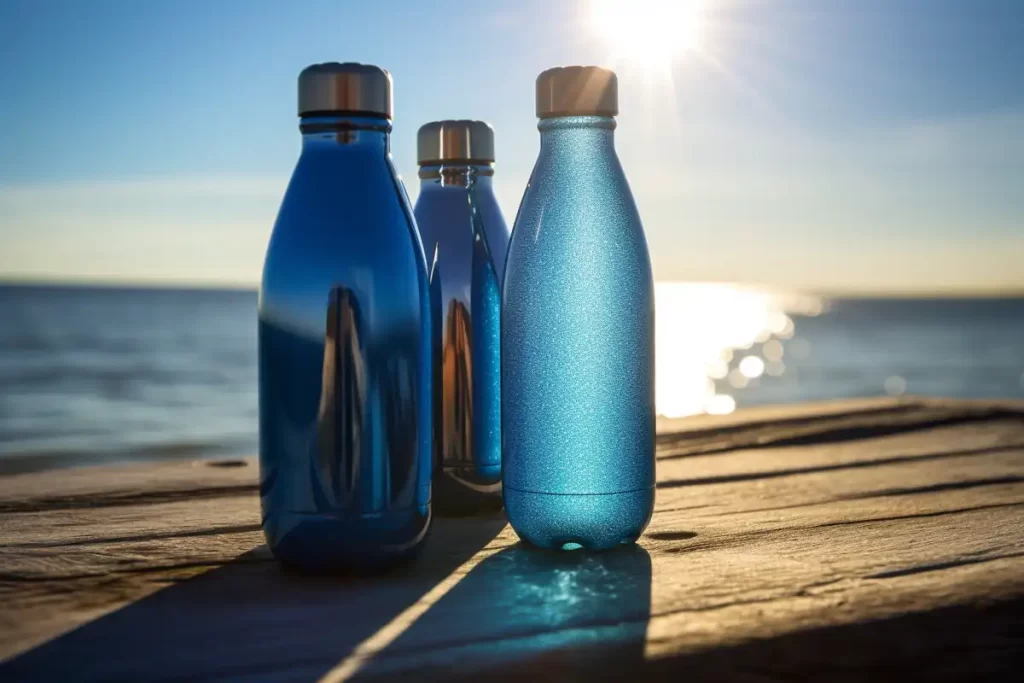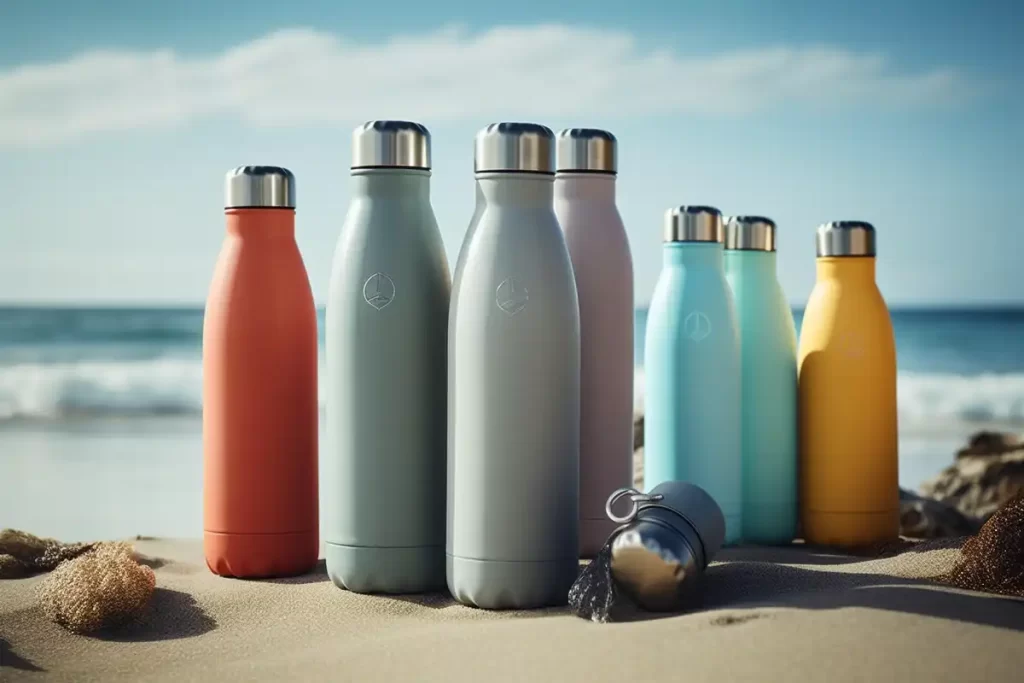Reusable water bottles have become a popular eco-friendly choice for many people looking to minimize their environmental impact. But how sustainable are these bottles, and are they genuinely better for the environment? In this comprehensive article, we’ll explore the pros and cons of reusable water bottles, discuss the most environmentally friendly options available, and provide useful tables, FAQs, and lists to help you make an informed decision.
The Environmental Benefits of Reusable Water Bottles
Reducing Plastic Waste
One of the most significant benefits of using reusable water bottles is the reduction of plastic waste. Single-use plastic bottles contribute to a massive amount of waste that ends up in landfills and oceans. By choosing a reusable water bottle when you go for a walk, you can help decrease the demand for disposable plastic bottles and prevent further pollution. Assuming the average weight of single-serve 0.5 liter PET water bottle is now 9.25 grams, the following table shows the waste reduction per year assuming an annual usage of 150, 300, and 600 bottles [1].
| Yearly Plastic Bottle Consumption | Reusable Bottle Equivalent | Waste Reduction (kg) |
|---|---|---|
| 150 | 1 | 1.4 |
| 300 | 1 | 2.8 |
| 600 | 1 | 5.6 |
Decreasing Greenhouse Gas Emissions
Manufacturing and transporting single-use plastic bottles generates greenhouse gas emissions, which contribute to climate change. By using a reusable water bottle, you’re reducing the need for new plastic production and minimizing the environmental impact associated with disposable bottles. Using the assumption that 1.538 kg carbon dioxide is emitted for each kg of 85% recycled polyethylene (PET) produced (cradle to grave), the following table shows the CO2 equivalent emission reduction [2].
| Yearly Plastic Bottle Consumption | Emission Reduction (kg CO2 equivalent) |
|---|---|
| 150 | 2.15 |
| 300 | 4.3 |
| 600 | 8.6 |
Conserving Resources
Making disposable plastic bottles consumes a large amount of water and energy. By using a reusable water bottle, you’re helping to conserve these valuable resources.
| Resource | Savings (per bottle) |
|---|---|
| Water | 5.3 liters (1.4 gallons) [3] |
| Oil | 0.25 liters (0.07 gallons) [4] |
| Energy | 1.5-2.8 kWh [5] |

The Cons of Reusable Water Bottles
Cleaning Requirements
One potential downside of using a reusable water bottle is the need for regular cleaning to prevent bacteria growth. This can require water and cleaning products, which may have their own environmental impacts.
Durability Concerns
While reusable water bottles are typically designed to be durable, they can still break or wear out over time. This can lead to the need for replacement, which may contribute to waste generation.
| Material | Average Lifespan | Proper Care Practices |
|---|---|---|
| Stainless Steel | 10-12 years [6] | Avoid dropping, clean regularly, do not overheat |
| Glass | 3-5 years | Use a protective sleeve, clean regularly |
| Plastic | 2-5 years | Avoid exposing to high temperatures, clean regularly |
Material Considerations
The materials used to make reusable water bottles can vary, and some may be more eco-friendly than others. Plastic, metal, and glass bottles each have their own environmental impacts, with metal and glass options generally being more sustainable than plastic.
| Material | Environmental Pros | Environmental Cons |
|---|---|---|
| Stainless Steel | Durable, recyclable, doesn’t leach chemicals, low production emissions | Energy-intensive production, heavier, potential for resource depletion [7] |
| Glass | Recyclable, doesn’t leach chemicals, low production emissions | Heavier, less durable than other materials, energy-intensive production, breakable |
| Plastic | Lightweight, less energy-intensive production, some options are recyclable | May leach chemicals, not as durable as other materials, non-recyclable plastics contribute to waste [8] |
Choosing the Most Environmentally Friendly Reusable Water Bottle
When selecting a reusable water bottle, consider the following factors:
- Material: Opt for bottles made from eco-friendly materials, such as stainless steel or glass, which have lower environmental impacts compared to plastic.
- Durability: Choose a high-quality bottle that is built to last, reducing the need for frequent replacements.
- Recyclability: Look for bottles made from materials that can be easily recycled at the end of their life.
| Material | Pros | Cons |
|---|---|---|
| Stainless Steel | Durable, recyclable, doesn’t retain tastes or odors | Heavier, can dent or scratch, may transfer heat/cold |
| Glass | Recyclable, doesn’t retain tastes or odors, good for hot or cold beverages | Fragile, heavy, may require a protective sleeve |
| Plastic (BPA-free) | Lightweight, affordable, durable | May retain odors, lower recyclability, possible health concerns |
Tips for Maximizing the Sustainability of Your Reusable Water Bottle

- Clean your bottle regularly with eco-friendly cleaning products to prevent bacteria growth and reduce the need for replacement.
- Carry your reusable bottle with you to avoid purchasing single-use bottles when on the go.
- Encourage friends and family to use reusable water bottles to help spread awareness and promote sustainable practices.
- Recycle your reusable water bottle at the end of its life, if possible, to minimize waste.
- Opt for brands that prioritize sustainability in their manufacturing processes and materials.
Frequently Asked Questions (FAQs)
Q: How much do reusable water bottles help the environment?
A: Reusable water bottles can significantly help the environment by reducing plastic waste, decreasing greenhouse gas emissions, and conserving resources. However, it’s essential to choose environmentally friendly materials and maintain the bottle properly to maximize its benefits.
Q: How effective are reusable water bottles?
A: Reusable water bottles are effective in minimizing the environmental impact associated with single-use plastic bottles. They can be used for extended periods, reducing the need for disposable bottles and the associated waste and pollution.
Q: What environmental impact do water bottles have?
A: Single-use plastic water bottles have a considerable negative environmental impact, contributing to plastic waste, greenhouse gas emissions, and resource depletion. Reusable water bottles, on the other hand, have a significantly lower impact, especially if made from sustainable materials and properly maintained.
Q: What is the most environmentally friendly reusable water bottle?
A: The most environmentally friendly reusable water bottle options are those made from materials like stainless steel or glass, which have lower environmental impacts compared to plastic. Additionally, choosing bottles that are durable, recyclable, and manufactured using eco-friendly processes will further enhance their sustainability.
Q: Are reusable containers eco-friendly?
A: Reusable containers, in general, are eco-friendly when compared to their single-use counterparts. They help reduce waste, conserve resources, and minimize greenhouse gas emissions. However, the sustainability of a reusable container depends on its material, durability, and recyclability.
Q: Are reusable plastics better for the environment?
A: Reusable plastics can be better for the environment compared to single-use plastics, as they reduce waste and resource consumption [9]. However, not all reusable plastics are created equal. Opt for BPA-free plastics and ensure that they are recyclable at the end of their life to maximize their environmental benefits.
Q: What is the environmental impact of reusable containers?
A: The environmental impact of reusable containers varies depending on the materials used and how they are maintained. In general, reusable containers made from sustainable materials like stainless steel or glass have a lower impact compared to those made from plastic. Proper care, cleaning, and disposal of reusable containers also play a role in their overall environmental impact.
By making the switch to a reusable water bottle, you’ll be doing your part to reduce plastic waste, decrease greenhouse gas emissions, and conserve valuable resources. For more information on sustainability and eco-friendly practices, visit our articles on sustainable water management, the environmental impact of desalination, and how to save water at home.

